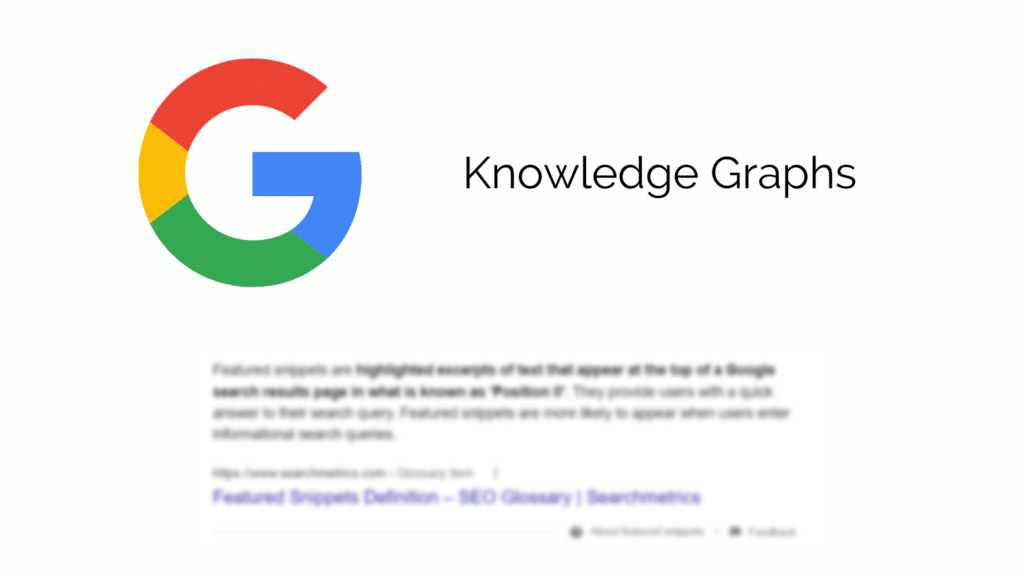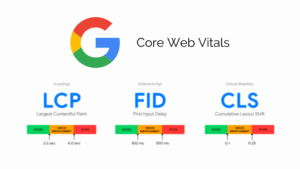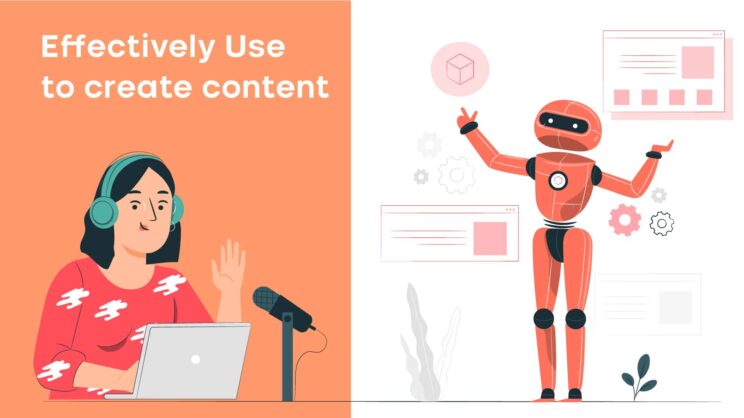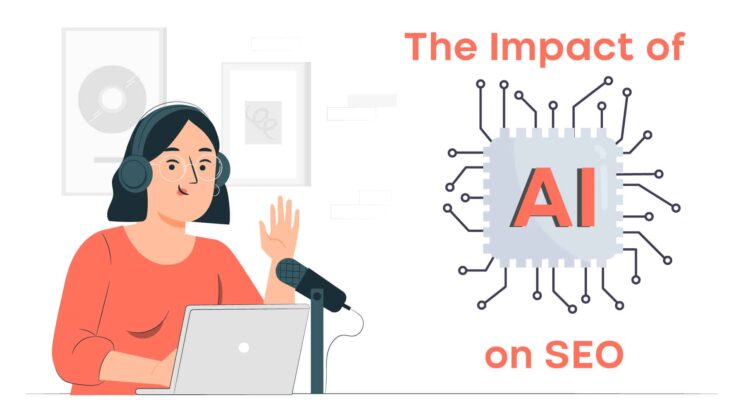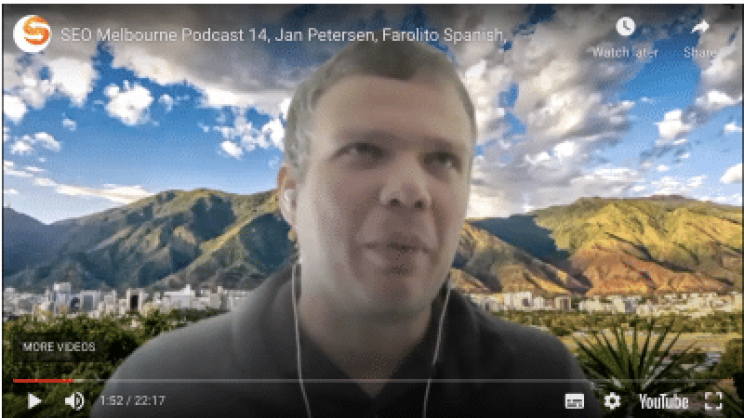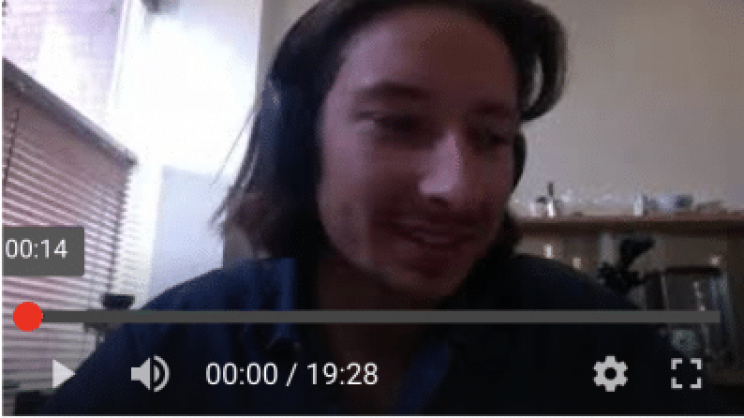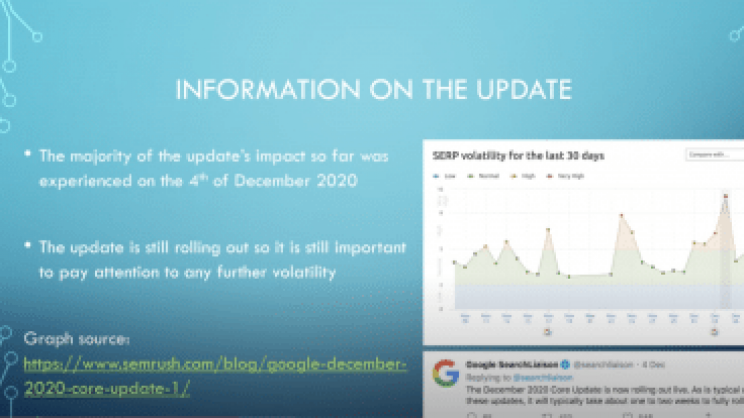In this podcast, Merwin discusses emerging SEO Trends that can be observed through 2021. Trends and algorithms within the SEO world are always changing and it’s essential to stay on top of them. Here are some of the areas that are discussed within the podcast:
- Artificial Intelligence Algorithms – Google MUM, RankBrain & Knowledge Graph
- Video Strategies and Why They’re So Important
- Podcasts and How They Are Becoming More Relevant
- Google’s Core Web Vitals Update
The future of SEO is always progressing and evolving, the days of keyword stuffing are long gone. SEO is changing so that people will stop writings articles for the algorithm, and start writing articles for the users instead.
We will be going through topics including AI Algorithms that Google has started using, such as MUM, RankBrain, and Knowledge Graph, Why you should be focusing on video and podcast content, Core Web Vitals, and Mobile SEO. Stay tuned to find out how you can utilise these emerging trends to your advantage.
Google MUM
The first algorithm we will be looking at is Google’s Multitask Unified Model, referred to as MUM, which is an AI-powered algorithm that can interpret images, podcasts, and videos to gain information, currently in 75 different languages. This helps Google to better understand the content and search intent. This will benefit SEO as in the future, Google will be able to focus on other media than text, but also high-quality content across all formats such as images, videos and audio. This provides SEO with the opportunity to potentially evolve to include more than just keywords alone, but other forms of media such as images, videos and audio files. The inclusion of all these different media types allows websites to take advantage of MUM’s multimodal capabilities.
Google MUM allows for a comprehensive understanding of information that will help better interpret complex search queries in their specific context. Other than being able to interpret information across different languages, MUM can also reply in natural conversations to people that query in the search engine, bringing Google closer to the human conversational search experience and delivering the best possible user experience. This is very exciting as an article that you had written for your website could be read by someone on the other side of the world by someone who speaks a completely different language than you do.
RankBrain
The next AI algorithm we’re going to be looking at is RankBrain. RankBrain is an algorithm utilised by Google to sort search results, whilst also helping Google to comprehend the search query. RankBrain is something every SEO specialist has to consider as Google has stated that it is Google’s third most important ranking signal which is quite significant.
So, here I’ll show you an example of RankBrain in action, if I were to google Italian plumber Nintendo game, you can see that the first result here is the Wikipedia page for Mario, so how did google know this is what I was looking for if Mario was not included in my search query? Well Rank Brain actually tries to figure out what I meant by my query and then using keywords Google has seen before, it has provided me with results it believes are most relevant.
Knowledge Graph
The final area of AI we will be covering is Knowledge Graph. Essentially, Google uses automation to handle searches and improve search algorithms and one way this is done is through Google’s Knowledge Graph which is filled with billions of facts on various people, places, and things. Facts, (often categorised into ‘entities’) cover everything from niche topics to public interest topics like medicine and science. Overall, there are more than 5 billion entities and over 500 billion facts on the Graph.
An additional impact that the Google Knowledge Graph can have on SEO involves answering a question from the user, Google will always look at the pre-existing knowledge in its graph before checking the open web, which shrinks traditional organic advertisements.
Knowledge Graph answers often pull from a variety of sources and show up on the right in a big beautiful box or above the organic search results in a photo gallery (or carousel).
You’ll typically see these types of search results for brands, people, and organizations.
So, here I’ll show you an example of Google’s Knowledge Graph in action. If I Google world-famous director, Christopher Nolan, you can see here that there are not only normal search results, but additionally, this informative box to the right, which provides a plethora of information on Nolan, including Movies he has previously directed, books that he is associated with, and a background snippet as well.
So what does this all mean for SEO?
Essentially, as AI becomes smarter at recognising information and content throughout a page, it is more important than ever to be producing high-quality, rich content that is providing information that is valuable and beneficial to your community and users.
Algorithms such as Google MUM, RankBrain, and Knowledge Graph are all in place for the user to receive the information that they are searching for, as quickly and easily as possible.
People will stop writing articles for the algorithm for good and write them for the people instead.
Voice Search
Although Voice Search may have started as a fad, it is becoming more and more relevant. It is more than likely that you can find a voice search device on your desk at the moment, and with the expected percentage of households predicted to own a smart speaker by 2022 to be a staggering 55%, it is more important, now more than ever, to start optimising for voice search.
A study also shows that 55% of users use voice search to ask questions on a smartphone.
Video Strategies
Video content is definitely an area that needs addressing. This is because Youtube is the second most popular search engine after Google with 1 billion users. Optimising video content for search engines is important and this can be done by optimising video channel names and descriptions, with keywords or hashtags. Descriptions should not be overloaded with keywords but should instead provide an accurate description of what the channel and video are about.
As an effective method of enriching user experience and engagement, video content is becoming more and more integrated by businesses and companies to increase traction. The power of video content lies in its ability to not only evoke a different kind of emotional reaction compared to text but also engage the audience for longer; increasing dwell time and ranking the page higher. As more and more businesses understand the appeal that video content has for their audience in adding both value and another level of audience engagement, the pressure and competition to produce videos intensifies. And like all new developments on the internet tend to follow; as video for SEO is booming and more websites opt for this type of content, the more competitive it becomes. 82% of global consumer traffic will be video by 2020 according to a report by CISCO and is therefore predicted to take the same path as text content.
Exploring these recent trends and the transformation from text to video, begs the question; what is next for SEO?
Podcasts, although not new in popular culture, are recently gaining recognition in the SEO world. As text and soon video continue to become fiercely competitive, only a small amount of companies are diving into the podcast market as an alternate option for consumption. A podcast is a series of audio-recorded episodes centered around a theme or topic and is an innovation in the SEO landscape.
Another recent advancement that is an extremely valuable tool for SEO podcasts is transcriptions. Google is now transcribing podcast episodes as a means of metadata. Using transcriptions as content metadata will not only make your podcast more searchable but from an SEO standpoint; provides for more opportunities to include keywords that will appear in relevant search results and further elevate ranking within the SERPs. This will essentially heighten the level of discoverability and build on your audience through search traffic.
Because Google is now able to index podcast content through transcripts, the argument that text has more value due to it being seen as ‘index-able content’ is now deemed irrelevant.
Here are some quick tips on how to optimise your videos.
1. Ensure your video descriptions are optimised and you utilise tags that are relevant and popular.
First things first: According to Google, the official character limit for YouTube video descriptions is 1,000 characters. And while it’s okay to use all of that space, remember that your viewer most likely came here to watch a video, not to read an essay.
If you do choose to write a longer description, keep in mind that YouTube only displays the first two or three lines of text — which amounts to about 100 characters. After that point, viewers have to click “show more” to see the full description. That’s why we suggest front-loading the description with the most important information, like CTAs or crucial links.
As for optimizing the video itself, it doesn’t hurt to add a transcript of the video, especially for those who have to watch it without volume. That said, Backlinko’s research also found no correlation between descriptions that were optimized for a certain keyword and the rankings for that term.
2. Make sure to Categorise your video correctly
Once you upload a video, you can categorize it under “Advanced settings.” Choosing a category is another way to group your video with similar content on YouTube so it winds up in different playlists and gains exposure to more viewers who identify with your audience.
It might not be as simple as it looks. In fact, YouTube’s Creator Academy suggests marketers go through a comprehensive process to determine which category each video belongs in. It’s helpful, the guide writes, “to think about what is working well for each category” you’re considering by answering questions like:
Who are the top creators within the category? What are they known for and what do they do well?
Are there any patterns between the audiences of similar channels within a given category?
Do the videos within a similar category share qualities like production value, length, or format?
3. Rename your video file using a target keyword
When we search for videos, one of the first things that our eyes are drawn to is the title. That’s often what determines whether or not the viewer will click to watch your video, so the title should not only be compelling, but also clear and concise.
Although your keyword plays a big part in your video title, it also helps if the title closely matches what the viewer is searching for. Research conducted by Backlinko found that videos with an exact keyword match in the title have only a slight advantage over those that don’t. Here’s a linear representation of those findings:
Are you looking for more tips about video content strategy? Make sure to check out our video linked below: https://seosydney.com/video/6-things-you-need-to-know-about-a-video-seo-strategy-part-2/.
Core Web Vitals
I won’t touch on this topic too much as our previous podcast was based on this, but it is still an imperative part of the emerging trends, as it gives us an insight into exactly what Google is looking for on a website and what they reward and desire. A crucial part of this I will bring up again is Mobile SEO. When users are browsing the internet, a study shows that 70% of the time they are on their mobile phones. This is a substantial percentage that definitely cannot be overlooked and needs to be addressed. Google has stated that pages’ search engine results will be negatively impacted if the pages cannot be easily viewed and interacted with on a mobile device. It is also crucial to ensure that there are no intrusive interstitials such as annoying pop-up ads that may create an undesirable navigation experience for users.
Alright! Well, that about wraps it up, thank you for watching our podcast about emerging trends within the SEO world. If you have any other questions regarding anything and everything SEO, check out SEO Company Melbourne! If you have any further questions feel free to leave a comment below.


